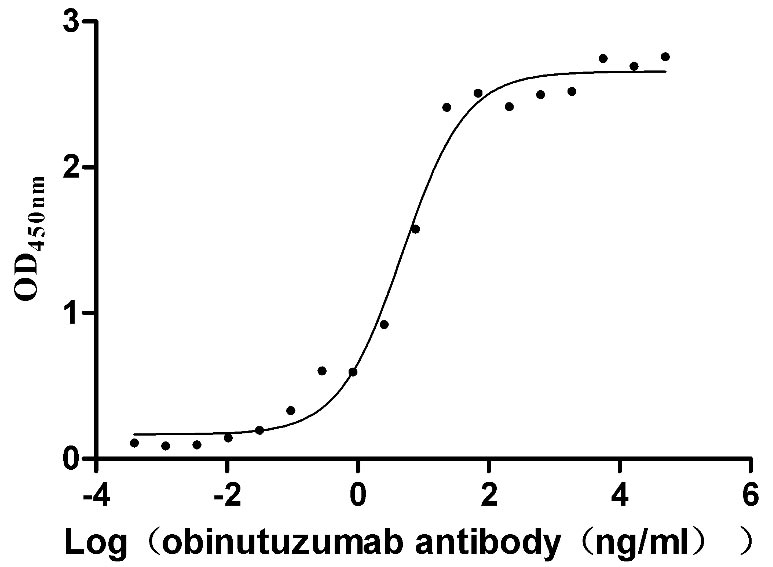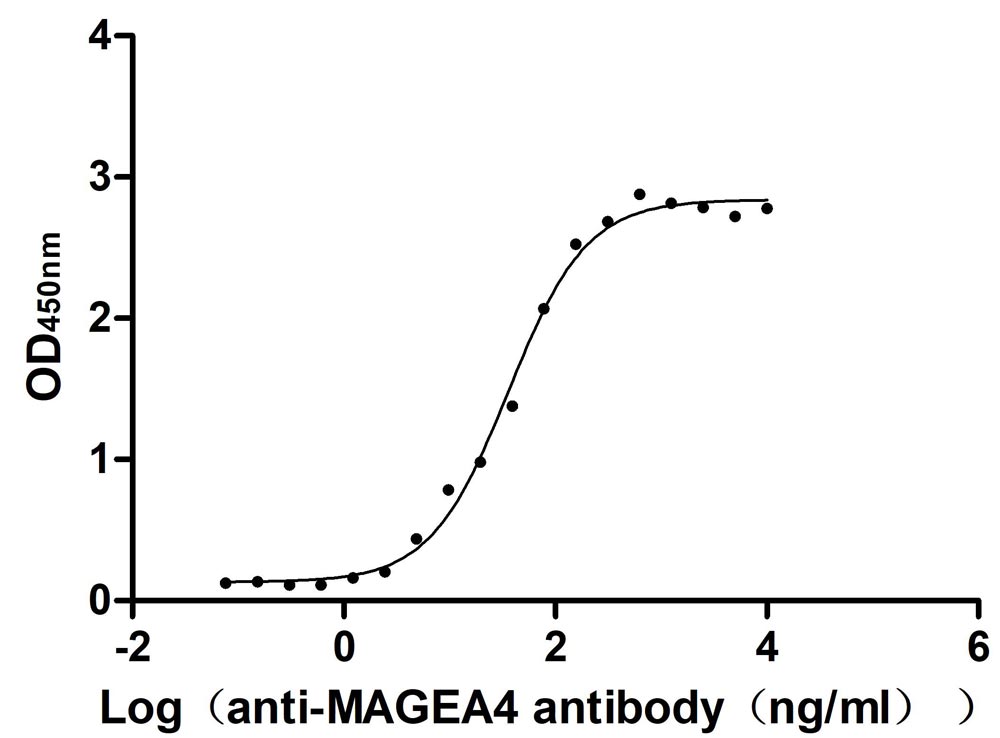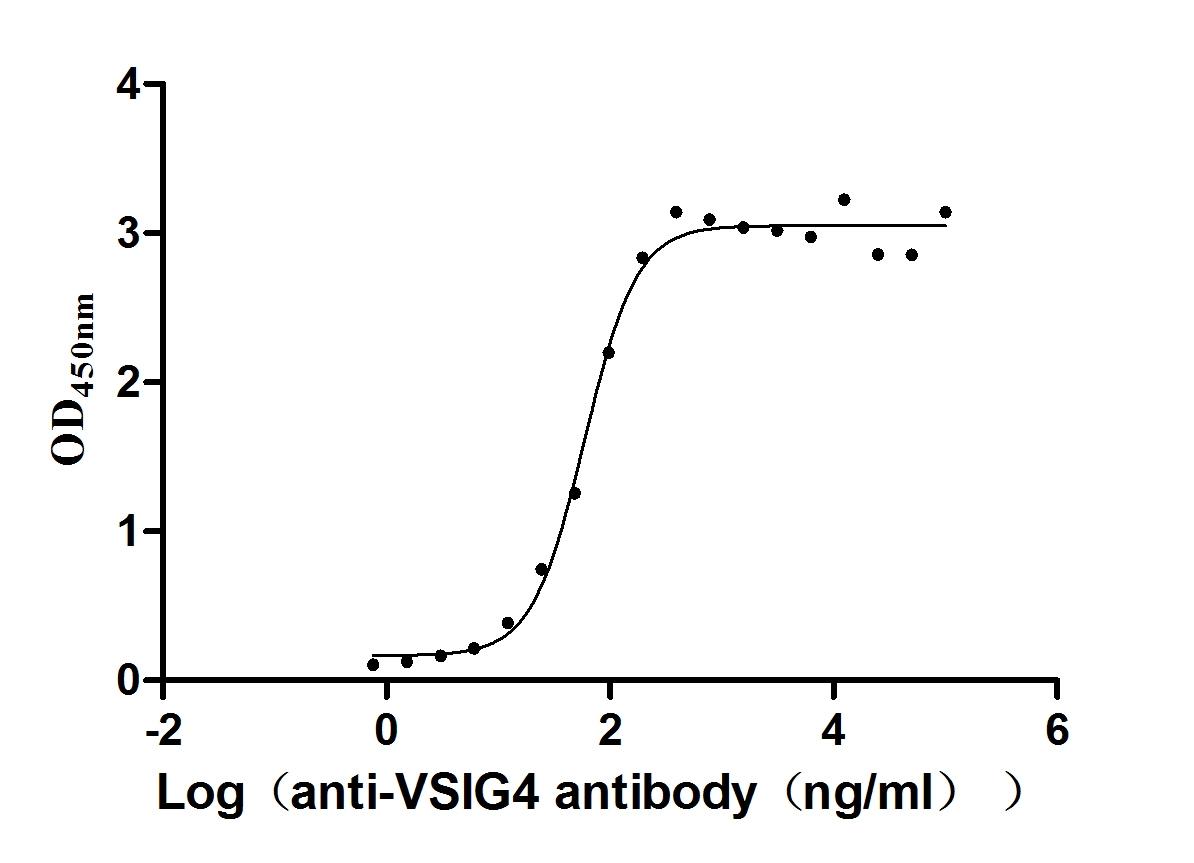Recombinant Arabidopsis thaliana Protein TOPLESS (TPL), partial
-
中文名稱:擬南芥TPL重組蛋白
-
貨號(hào):CSB-EP856722DOA-B
-
說明書:
-
規(guī)格:
-
來源:E.coli
-
共軛:Avi-tag Biotinylated
E. coli biotin ligase (BirA) is highly specific in covalently attaching biotin to the 15 amino acid AviTag peptide. This recombinant protein was biotinylated in vivo by AviTag-BirA technology, which method is BriA catalyzes amide linkage between the biotin and the specific lysine of the AviTag.
-
其他:
產(chǎn)品詳情
-
純度:>85% (SDS-PAGE)
-
基因名:TPL
-
Uniprot No.:
-
別名:TPL; WSIP1; At1g15750; F7H2.9; Protein TOPLESS; WUS-interacting protein 1
-
種屬:Arabidopsis thaliana (Mouse-ear cress)
-
蛋白長(zhǎng)度:Partial
-
蛋白標(biāo)簽:Tag?type?will?be?determined?during?the?manufacturing?process.
The tag type will be determined during production process. If you have specified tag type, please tell us and we will develop the specified tag preferentially. -
產(chǎn)品提供形式:Lyophilized powder
Note: We will preferentially ship the format that we have in stock, however, if you have any special requirement for the format, please remark your requirement when placing the order, we will prepare according to your demand. -
復(fù)溶:We recommend that this vial be briefly centrifuged prior to opening to bring the contents to the bottom. Please reconstitute protein in deionized sterile water to a concentration of 0.1-1.0 mg/mL.We recommend to add 5-50% of glycerol (final concentration) and aliquot for long-term storage at -20℃/-80℃. Our default final concentration of glycerol is 50%. Customers could use it as reference.
-
儲(chǔ)存條件:Store at -20°C/-80°C upon receipt, aliquoting is necessary for mutiple use. Avoid repeated freeze-thaw cycles.
-
保質(zhì)期:The shelf life is related to many factors, storage state, buffer ingredients, storage temperature and the stability of the protein itself.
Generally, the shelf life of liquid form is 6 months at -20°C/-80°C. The shelf life of lyophilized form is 12 months at -20°C/-80°C. -
貨期:Delivery time may differ from different purchasing way or location, please kindly consult your local distributors for specific delivery time.Note: All of our proteins are default shipped with normal blue ice packs, if you request to ship with dry ice, please communicate with us in advance and extra fees will be charged.
-
注意事項(xiàng):Repeated freezing and thawing is not recommended. Store working aliquots at 4°C for up to one week.
-
Datasheet :Please contact us to get it.
靶點(diǎn)詳情
-
功能:Transcriptional corepressor. May repress the expression of root-promoting genes in the top half of the embryo to allow proper differentiation of the shoot pole during the transition stage of embryogenesis. Regulates the expression of PLT1 and PLT2. Negative regulator of jasmonate responses. Negative regulator of auxin responses. Negative regulator of multiple floral organ identity genes. Required for ovule development.
-
基因功能參考文獻(xiàn):
- relative to mammalian TBL1, evolved a new tetramerization interface and unique and highly conserved surface for interaction with repressors PMID: 28698367
- The GIR1 and GIR2 might may link TPL to and participate in epigenetic regulation of root hair development. PMID: 28526412
- These data unveil a pivotal role of the co-repressor TPL in the shoot and root meristems. PMID: 28320734
- TOPLESS mediates brassinosteroid-induced transcriptional repression through interaction with BZR1. PMID: 24938363
- Topless and Topless-related proteins form a tertiary complex with TIE1 protein at early stages of leaf development. PMID: 23444332
- We identified transcription factors interacting with TPL. PMID: 22065421
- Arabidopsis JAZ proteins recruit the Groucho/Tup1-type co-repressor TOPLESS (TPL) and TPL-related proteins (TPRs) through a previously uncharacterized adaptor protein, designated Novel Interactor of JAZ (NINJA) PMID: 20360743
- TPL and other TPR proteins are necessary to repress the expression of root-promoting genes in the top half of the embryo to allow proper differentiation of the shoot pole. [topless][TPL] PMID: 16763149
- TPL can interact with IAA12/BODENLOS through an ETHYLENE RESPONSE FACTOR-associated amphiphilic repression motif; study shows TPL is a transcriptional co-repressor & furthers understanding of how auxin regulates transcription during plant development PMID: 18258861
顯示更多
收起更多
-
亞細(xì)胞定位:Nucleus.
-
組織特異性:Expressed in embryo and in extraembryonic tissues. Expressed in inflorescences, flowers, floral meristems, developing anthers and ovules. Detected in the vascular tissues, shoot apical meristem, cotyledons and young leaves. Expressed ubiquitously in the p
-
數(shù)據(jù)庫鏈接:
Most popular with customers
-
Recombinant Human B-lymphocyte antigen CD20 (MS4A1)-VLPs (Active)
Express system: Mammalian cell
Species: Homo sapiens (Human)
-
Recombinant Human Melanoma-associated antigen 4 (MAGEA4) (Active)
Express system: Mammalian cell
Species: Homo sapiens (Human)
-
Recombinant Dog Angiopoietin-2 (ANGPT2) (Active)
Express system: Mammalian cell
Species: Canis lupus familiaris (Dog) (Canis familiaris)
-
Recombinant Human Epithelial discoidin domain-containing receptor 1 (DDR1), partial (Active)
Express system: Mammalian cell
Species: Homo sapiens (Human)
-
Recombinant Human Complement component C1q receptor (CD93), partial (Active)
Express system: Mammalian cell
Species: Homo sapiens (Human)
-
Recombinant Human V-set and immunoglobulin domain-containing protein 4 (VSIG4), partial (Active)
Express system: Mammalian cell
Species: Homo sapiens (Human)
-
Recombinant Human CUB domain-containing protein 1 (CDCP1), partial (Active)
Express system: Mammalian cell
Species: Homo sapiens (Human)
-
Recombinant Human Tumor necrosis factor ligand superfamily member 15(TNFSF15) (Active)
Express system: Mammalian cell
Species: Homo sapiens (Human)









-AC1.jpg)









